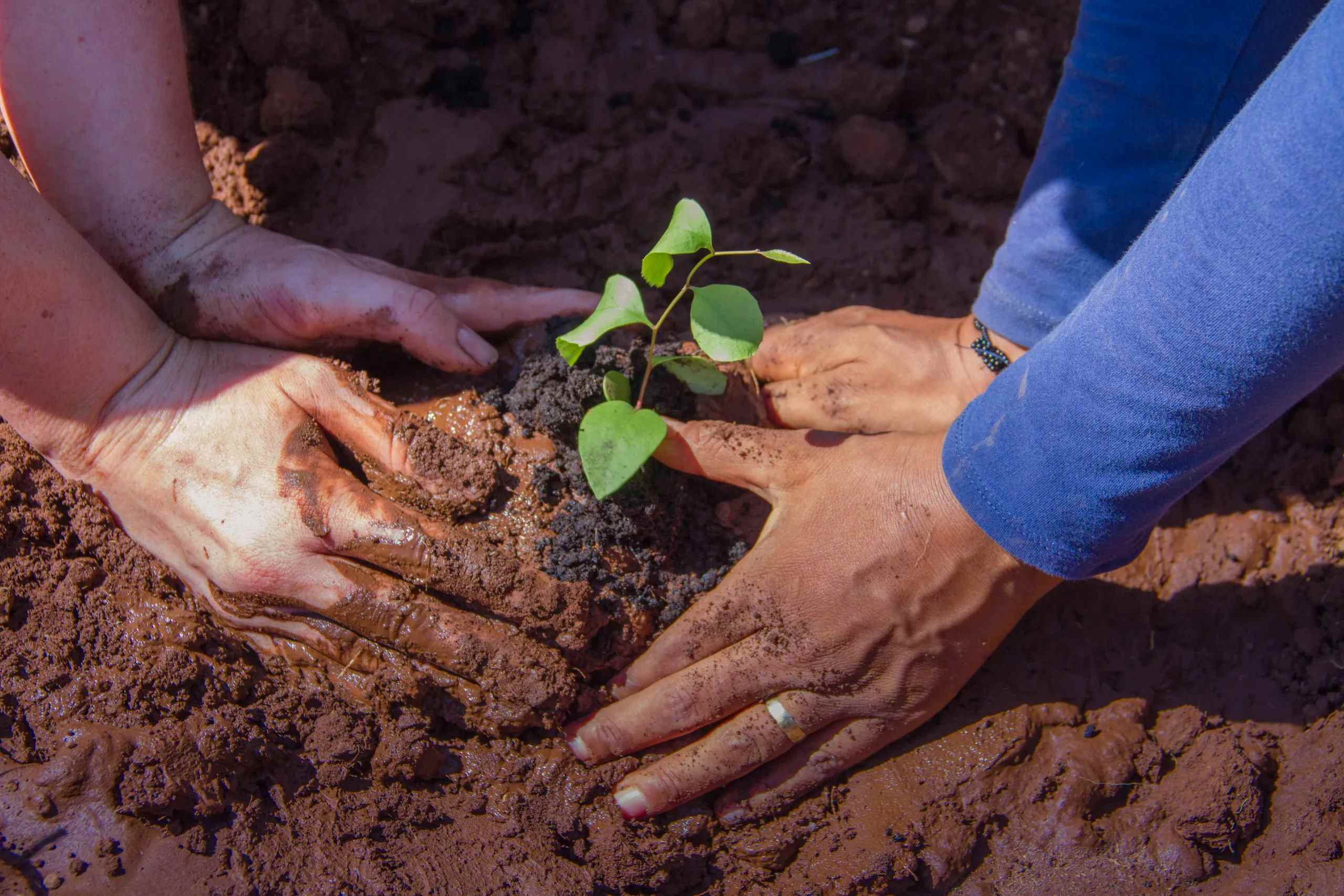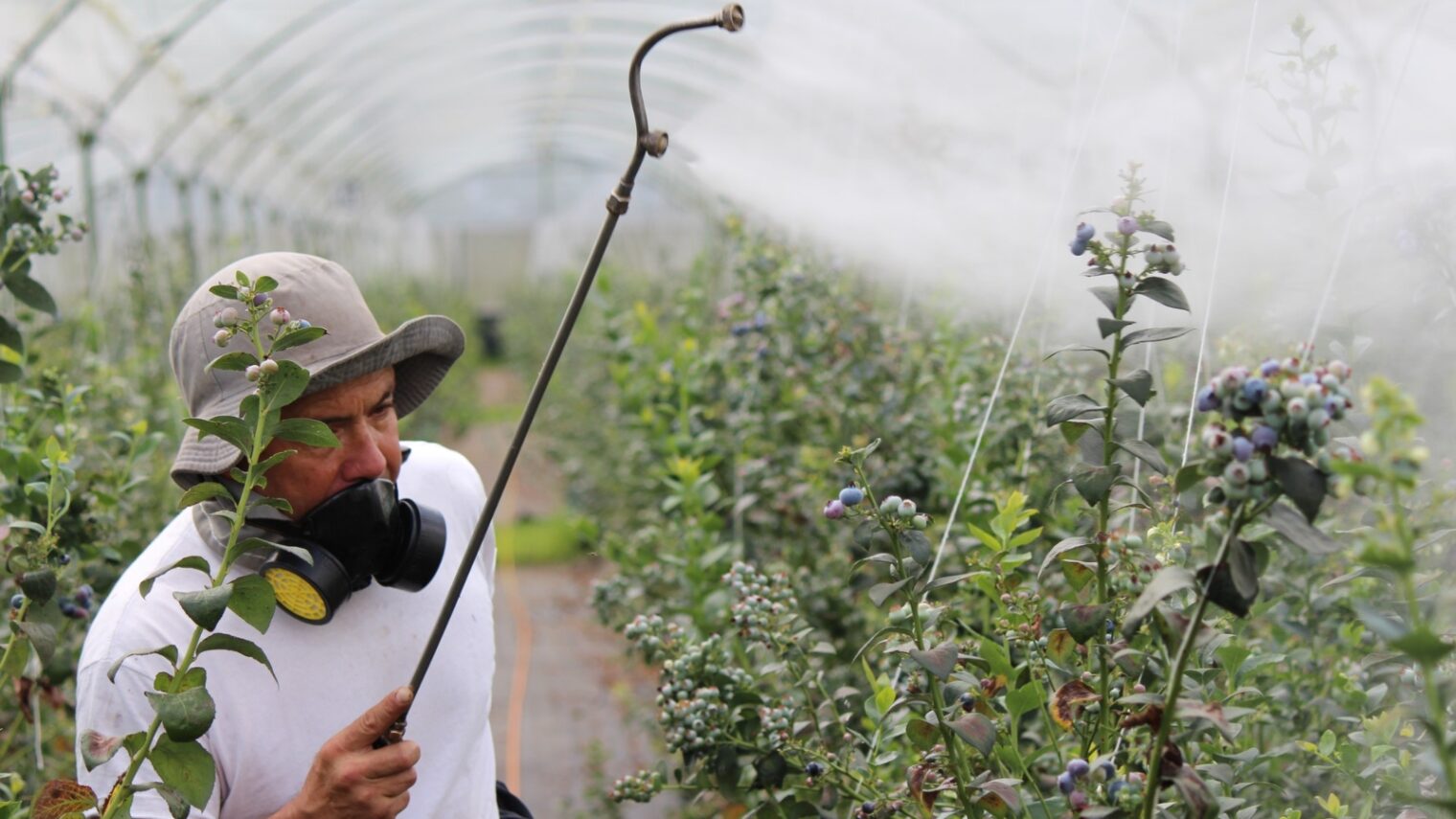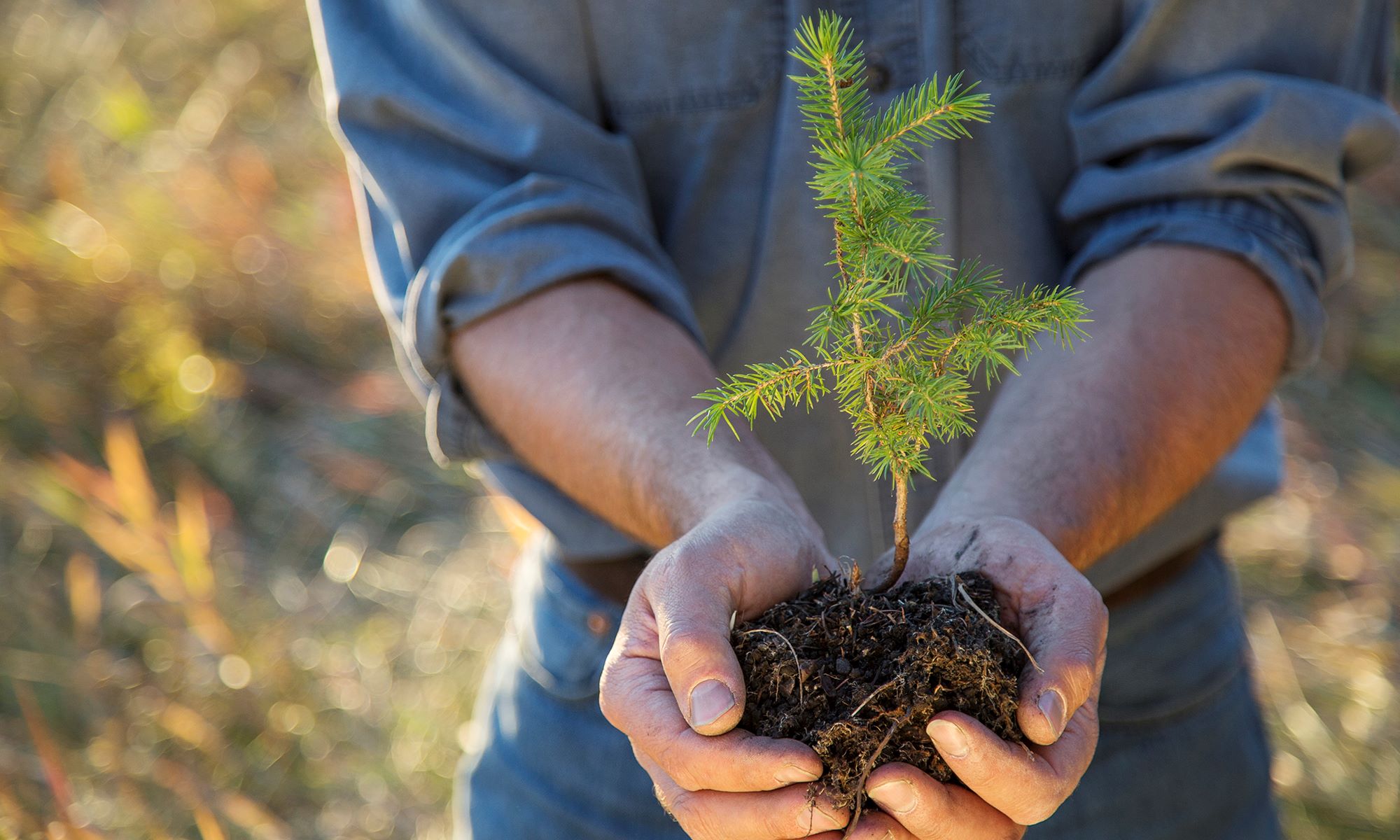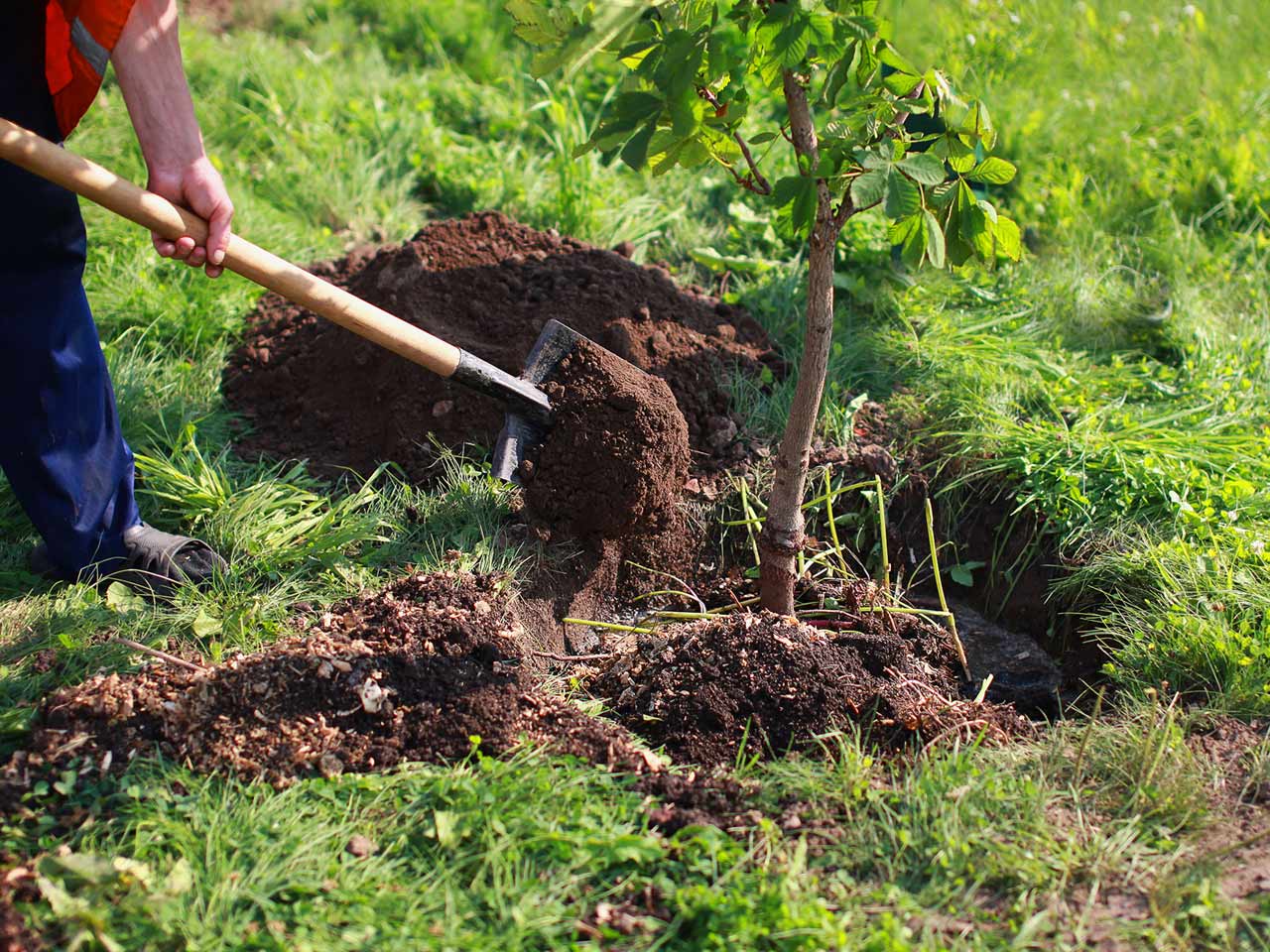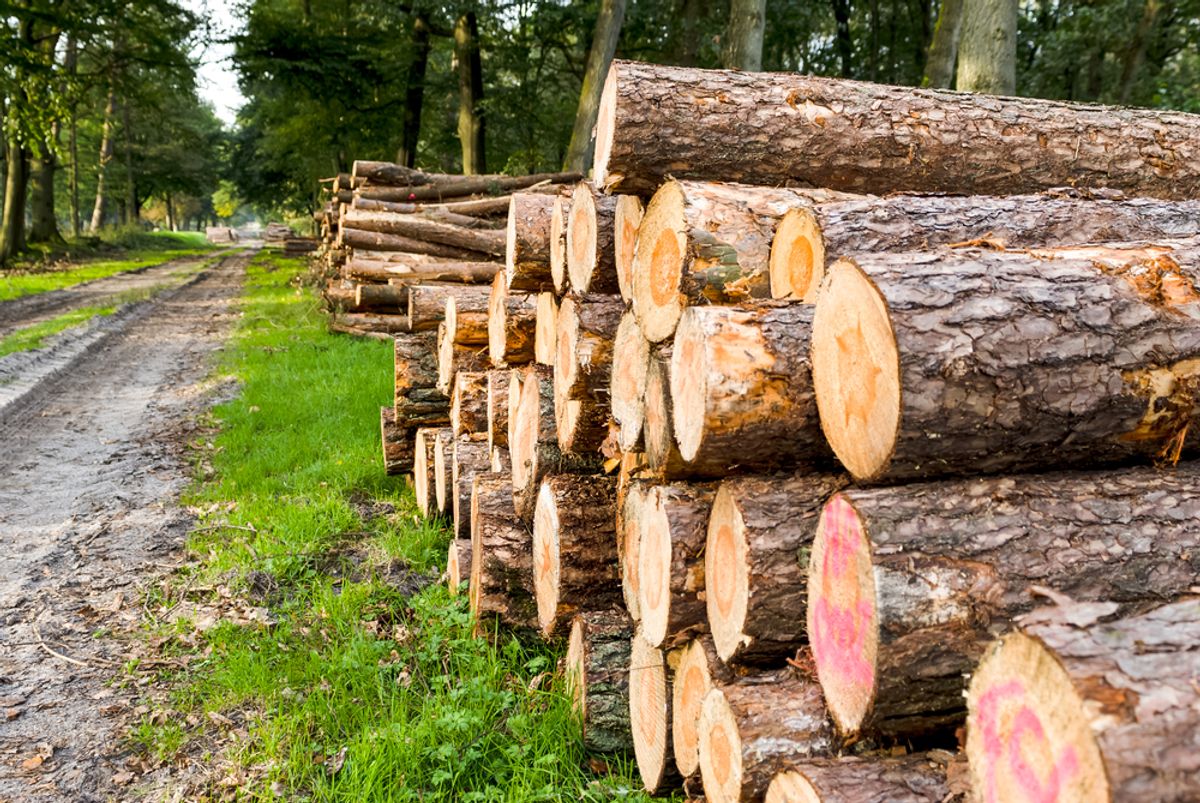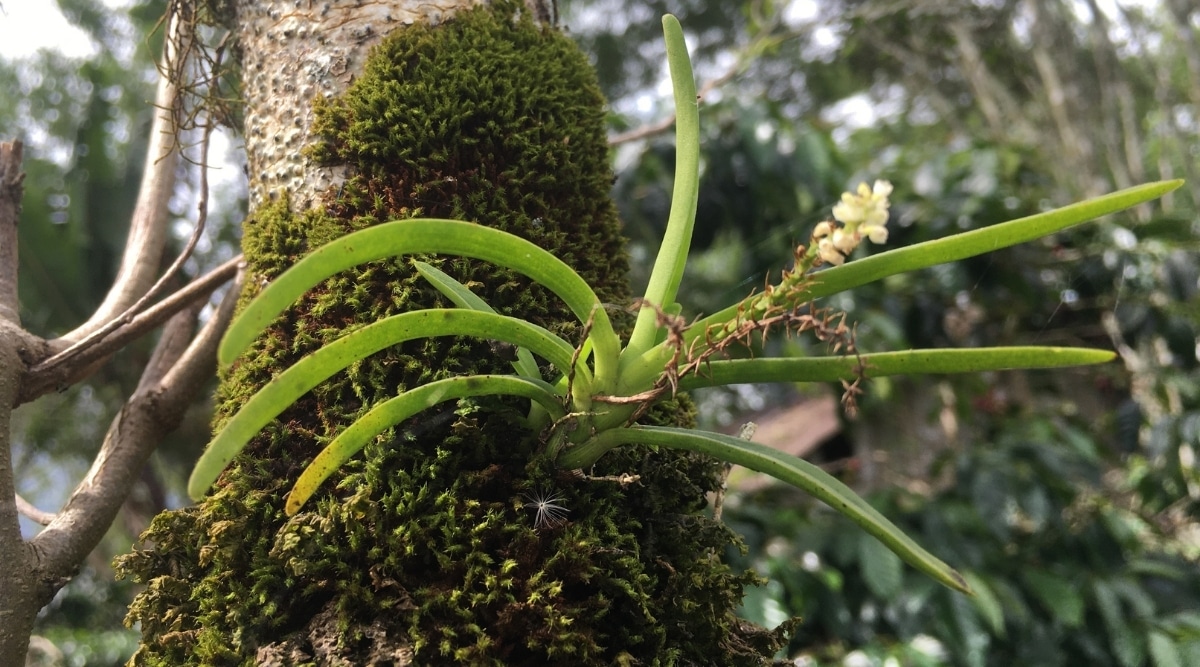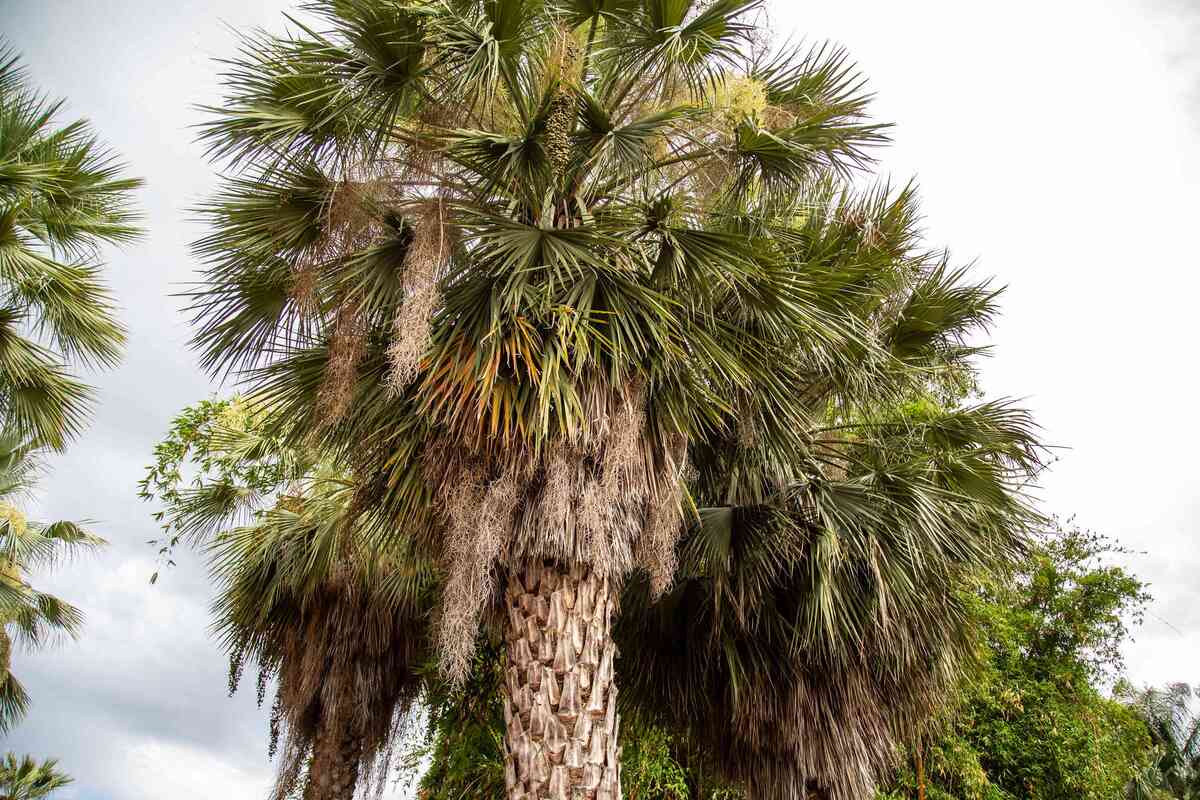Home>Gardening Tips and Tricks>Eco-Friendly Gardening>How Does Planting Trees Help The Environment


Eco-Friendly Gardening
How Does Planting Trees Help The Environment
Modified: February 8, 2024
Learn the benefits of eco-friendly gardening and how planting trees can greatly improve the environment. Discover the positive impact of sustainable practices on the planet.
(Many of the links in this article redirect to a specific reviewed product. Your purchase of these products through affiliate links helps to generate commission for Chicagolandgardening.com, at no extra cost. Learn more)
Table of Contents
Introduction
Welcome to the world of eco-friendly gardening! In today’s fast-paced and increasingly industrialized world, it has become more important than ever to take care of our environment. One simple and effective way to do this is through eco-friendly gardening practices, which not only beautify our surroundings but also contribute positively to the health of our planet.
Gardening has long been a popular hobby, but with the growing concern for sustainable living, eco-friendly gardening has gained significant attention. By adopting practices that minimize harm to the environment and maximize the benefits to both ourselves and nature, we can create a greener and healthier world.
In this article, we will explore the importance of planting trees in particular and how it plays a vital role in preserving and improving our environment. From carbon sequestration to creating habitats for wildlife, the benefits of trees are multifaceted and far-reaching. So, let’s dive in and discover how planting trees can make a significant difference in our ecosystem.
Importance of Trees for the Environment
Trees are often referred to as the “lungs of the Earth,” and for good reason. They play a crucial role in maintaining the delicate balance of our ecosystem and have numerous benefits for the environment. Let’s explore some of the key reasons why trees are so important:
- Carbon Sequestration: Trees act as natural carbon sinks, absorbing carbon dioxide from the atmosphere through photosynthesis and storing it in their tissues. This process helps reduce greenhouse gas emissions and mitigates climate change impacts. In fact, studies have shown that a mature tree can absorb up to 48 pounds of carbon dioxide per year!
- Reducing Air Pollution: Trees also help improve air quality by capturing harmful pollutants such as nitrogen oxide, sulfur dioxide, and particulate matter. Their leaves act as filters, trapping these pollutants and providing us with cleaner and healthier air to breathe.
- Providing Oxygen: Through the process of photosynthesis, trees release oxygen into the atmosphere, which is essential for all living organisms. Just one acre of trees can provide enough oxygen for 18 people in a year.
- Preventing Soil Erosion: The roots of trees anchor the soil, preventing erosion caused by wind and water runoff. This is especially crucial in areas prone to heavy rainfall or strong winds. Trees also contribute to soil fertility by adding organic matter through their fallen leaves and decaying branches.
- Conserving Water: Trees play a crucial role in water conservation. Their canopies help reduce evaporation, providing shade and cooling effects, which in turn reduce the need for irrigation. Additionally, their roots absorb and store water, thus minimizing runoff and preventing water pollution.
- Creating Habitats for Wildlife: Trees provide food, shelter, and nesting sites for a wide variety of wildlife, including birds, squirrels, insects, and even larger mammals. They contribute to the biodiversity of an area and support ecosystem balance.
- Improving Urban Areas: Trees in urban areas have numerous benefits. They help reduce the urban heat island effect by providing shade and lowering temperatures. They also absorb noise pollution, create a sense of tranquility, and enhance the aesthetic appeal of neighborhoods.
As you can see, trees are an invaluable asset to our environment. From combating climate change to enhancing biodiversity, their impact cannot be understated. By planting more trees and preserving existing ones, we can contribute to a healthier and more sustainable planet.
Carbon Sequestration
One of the most significant ways that trees help improve the environment is through carbon sequestration. In a time when atmospheric carbon dioxide levels are at an all-time high, trees act as vital agents in combatting climate change.
Trees play a crucial role in the carbon cycle. Through the process of photosynthesis, trees absorb carbon dioxide from the atmosphere and convert it into oxygen and glucose. While oxygen is released back into the air, glucose is used as a source of energy for the tree’s growth and maintenance.
But what happens to the carbon dioxide? Trees store carbon dioxide in their trunks, branches, and leaves. This process allows trees to act as natural carbon sinks, helping to reduce the amount of carbon dioxide in the atmosphere. In fact, studies have shown that a single mature tree can absorb around 48 pounds of carbon dioxide per year.
By planting more trees and preserving existing forests, we can significantly increase carbon sequestration rates. Reforestation projects and afforestation efforts have the potential to remove a substantial amount of carbon dioxide from the atmosphere, helping to mitigate the impact of greenhouse gas emissions.
Furthermore, trees also have a long-term storage capacity for carbon. As trees grow and age, their ability to store carbon increases. This highlights the importance of protecting mature forests and preventing deforestation, as older trees are more effective in sequestering carbon compared to young and growing trees.
The impact of carbon sequestration by trees extends beyond climate change mitigation. By reducing the amount of carbon dioxide in the atmosphere, trees help improve air quality. Lower levels of carbon dioxide contribute to a healthier and more sustainable environment for all living organisms.
Overall, carbon sequestration by trees is an essential component of environmental conservation. By recognizing the crucial role trees play in storing carbon and implementing initiatives to increase tree cover, we can make significant strides in combating climate change and preserving our planet for future generations.
Reducing Air Pollution
Air pollution is a pressing environmental issue that affects the health and well-being of people and ecosystems worldwide. Fortunately, trees serve as natural air purifiers, helping to reduce air pollution and create cleaner and healthier environments.
Trees act as filters, trapping and absorbing air pollutants such as nitrogen oxide, sulfur dioxide, ozone, and particulate matter. The leaves of trees have microscopic pores that can capture these pollutants, preventing them from entering the atmosphere and being inhaled by humans and animals.
One of the most significant air pollutants that trees can help reduce is ozone. Ground-level ozone is a harmful pollutant that is formed when nitrogen oxide and volatile organic compounds react with sunlight. High levels of ozone can have detrimental effects on human health, causing respiratory problems and exacerbating conditions such as asthma.
Trees release compounds called volatile organic compounds (VOCs), which can react with ozone in the atmosphere, helping to reduce its concentration. This natural process, known as ozone uptake, plays a vital role in improving air quality and minimizing the negative impacts of ozone pollution.
Furthermore, trees absorb and sequester carbon dioxide, a greenhouse gas that contributes to climate change. By reducing the amount of carbon dioxide in the atmosphere, trees indirectly help reduce other air pollutants that are associated with the burning of fossil fuels and industrial activities.
Planting trees strategically in urban areas can have particular benefits in reducing air pollution. Trees in urban environments can help combat the urban heat island effect, where cities experience higher temperatures due to the dense concentration of buildings and pavement. The shade provided by trees helps to lower temperatures, reducing the need for energy-intensive cooling systems and decreasing the production of air pollutants.
In addition to their air-purifying properties, the aesthetic value of trees in urban areas can also have psychological benefits. Access to green spaces and nature has been shown to reduce stress and improve mental well-being, contributing to overall human health.
Overall, the presence of trees in our environment plays a crucial role in reducing air pollution. By planting more trees in both rural and urban areas, we can create cleaner and healthier air for ourselves and future generations to enjoy.
Providing Oxygen
Oxygen is essential for supporting life on Earth, and trees play a vital role in ensuring its availability. Through the process of photosynthesis, trees are able to produce oxygen and provide a continuous supply of this life-sustaining gas into the atmosphere.
During photosynthesis, trees use sunlight, water, and carbon dioxide to produce glucose, which serves as their source of energy. As a byproduct of this process, oxygen is released and released back into the air. This oxygen production is crucial as it provides humans, animals, and other organisms with the oxygen required for respiration.
A mature tree can release enough oxygen to support two to ten people annually. The oxygen production of trees becomes even more significant when considering the vast number of trees in our forests and woodlands.
In addition to oxygen production, trees help improve air quality by filtering out pollutants, as mentioned earlier. By purifying the air and reducing the concentration of pollutants, trees contribute to a healthier and more sustainable environment.
Interestingly, the oxygen produced by trees is not limited to rural areas or dense forests. Even in urban environments, street trees and green spaces play a role in oxygen production, providing a breath of fresh air in the midst of concrete and buildings.
It is important to note that while trees are responsible for oxygen production, they are not the sole providers. Other vegetation, such as plants and algae, also contribute to the overall oxygen balance. However, trees are particularly efficient in oxygen production due to their size and longevity.
Without the continuous oxygen production by trees, life as we know it would not be possible. By planting and preserving trees, we can ensure a sustainable oxygen supply for ourselves and future generations.
Preventing Soil Erosion
Soil erosion is a serious environmental problem that can have devastating effects on the health of ecosystems and agricultural productivity. Fortunately, trees play a crucial role in preventing soil erosion and maintaining the integrity of our soil.
The roots of trees act as anchors, holding the soil in place and preventing it from being washed away by wind or water. The extensive network of tree roots creates a binding effect, stabilizing the soil and reducing the risk of erosion. This is especially important in areas prone to heavy rainfall or strong winds.
When trees are removed from an area, whether through deforestation or land development, the loss of their root systems disrupts the natural soil reinforcement. Without the roots to hold the soil together, it becomes more susceptible to erosion, leading to the loss of fertile topsoil and the degradation of the land.
In addition to anchoring the soil, trees also contribute to the prevention of soil erosion by reducing the impact of rainfall. When raindrops fall on the canopies of trees, it breaks the force of the water and slows down its velocity before reaching the ground. This prevents the soil from being dislodged and washed away.
Furthermore, the leaves and branches of trees provide a natural mulch layer on the ground. As these organic materials decompose, they add valuable nutrients to the soil, improving its fertility and structure. This organic matter also helps increase the water-holding capacity of the soil, reducing moisture loss and minimizing the risk of erosion.
Overall, trees play a critical role in preventing soil erosion and soil degradation. By preserving existing forests and planting trees in areas vulnerable to erosion, we can protect our soils, maintain productive agricultural lands, and preserve the health of our ecosystems.
Conserving Water
Water scarcity is a growing concern in many parts of the world. Fortunately, trees play a vital role in conserving water and ensuring its availability for both humans and the environment.
Trees contribute to water conservation in various ways. Firstly, their canopies provide shade, reducing evaporation from the ground and minimizing water loss. This is especially important in dry and arid regions where water resources are limited. The cooling effect of tree shade also helps to reduce the need for irrigation in urban and agricultural areas.
Secondly, tree roots absorb and store water from the soil. This process helps to prevent soil saturation and runoff, which can lead to water pollution and contribute to the loss of valuable water resources. By storing water in their roots, trees act as natural reservoirs, releasing it slowly over time and sustaining the surrounding ecosystem.
Moreover, the presence of trees in watershed areas has a significant impact on water conservation. Tree roots help to stabilize the soil, reducing erosion and preventing sediment from entering water bodies. This is critical for maintaining water quality and ensuring the health of aquatic ecosystems.
Additionally, trees contribute to the recharge of groundwater supplies. As trees absorb water from the soil, some of it is transpired back into the atmosphere through their leaves. The remainder is gradually released through the tree’s roots, replenishing groundwater sources and maintaining the balance of water in the ecosystem.
By conserving water, trees not only benefit the environment but also contribute to economic sustainability. Reduced water usage in agriculture and landscaping can lead to significant cost savings, especially in water-stressed regions. Municipalities and individuals can also benefit from lower water bills when trees are strategically planted and maintained.
Overall, the conservation of water resources is essential for the sustainability of our planet. Trees play a crucial role in this by reducing evaporation, storing water, preventing runoff, and replenishing groundwater supplies. By recognizing the value of trees in water conservation efforts, we can create a more sustainable and water-efficient future.
Creating Habitats for Wildlife
Trees are not only essential for human well-being but also play a critical role in sustaining and preserving wildlife habitats. The presence of trees provides diverse and rich ecosystems that support a wide range of plant and animal species.
Forests, woodlands, and even individual trees in urban areas create unique habitats that serve as homes and food sources for countless wildlife species. The diverse structure of trees, from the canopy to the understory and the forest floor, provides a variety of microhabitats that cater to different wildlife needs.
The canopy of trees provides shelter, nesting sites, and foraging opportunities for birds. Large, old trees with hollow cavities serve as ideal nesting spots for owls, woodpeckers, and other cavity-nesting species. Tree branches and foliage offer protection and foraging areas for squirrels, bats, and arboreal mammals.
Mature trees also provide a variety of food sources for wildlife. Fruits, nuts, seeds, and pollen are all essential dietary components for many species. Trees such as oak, beech, and cherry produce abundant crops that sustain wildlife populations throughout the year.
In addition to providing food and shelter, trees also facilitate crucial ecological interactions. Pollinators, such as bees and butterflies, rely on flowering trees for nectar and pollen, supporting the reproduction of both trees and flowering plants. The presence of these pollinators, in turn, benefits other wildlife species that depend on those plants.
Trees also create vital corridors and connectivity, allowing wildlife to move between different habitats. This is especially important in fragmented landscapes where natural habitats are disrupted by human activities. By providing a network of trees and green spaces, wildlife can travel, find mates, and access vital resources.
Preserving and planting trees in urban areas also helps support urban wildlife populations. Even small gardens with trees and native plants can attract a variety of wildlife, including birds, butterflies, and small mammals. These urban oases provide much-needed refuges for wildlife amidst concrete and buildings.
By creating diverse habitats and supporting wildlife populations, trees contribute to the overall biodiversity of our planet. Biodiversity is essential for ecosystem resilience and stability, maintaining the delicate balance of nature.
As caretakers of our environment, we have a responsibility to protect and preserve the habitats that trees provide. By planting and conserving trees, we can ensure a sustainable future for both wildlife and ourselves.
Improving Urban Areas
Trees have a remarkable ability to transform and enhance urban areas, making them more livable, sustainable, and visually appealing. From providing shade and reducing energy consumption to improving air quality and creating a sense of tranquility, trees offer numerous benefits in urban environments.
One of the most noticeable ways trees improve urban areas is through their provision of shade. The canopies of trees help to block the sun’s rays, reducing temperatures and providing relief from the heat. This shade not only makes outdoor spaces more comfortable for people but also helps to reduce energy consumption by diminishing the need for air conditioning.
Moreover, the cooling effect of trees can significantly reduce the urban heat island effect, where cities experience higher temperatures due to the abundance of concrete and asphalt. By strategically planting trees in urban areas, we can mitigate the heat island effect and create a more temperate and pleasant environment for residents.
In addition to providing shade, trees also play a vital role in improving air quality. They help to filter out pollutants and capture airborne particles, such as dust, pollen, and smoke. Through their leaves and bark, trees absorb harmful gases, such as nitrogen oxide and sulfur dioxide, thereby reducing the presence of air pollution in urban areas.
Furthermore, the aesthetic value of trees is undeniable. They add a touch of natural beauty to concrete jungles, softening the harsh lines and providing a sense of tranquility. The presence of trees in urban areas has been shown to have a positive impact on mental well-being, reducing stress and promoting overall happiness and quality of life.
Trees also have the ability to absorb noise pollution and create a buffer against urban sounds. The leaves and branches of trees act as natural sound barriers, helping to reduce noise levels and create a more peaceful and serene environment.
Creating green spaces in urban areas, whether it’s through parks, gardens, or street plantings, helps to foster a sense of community and connection with nature. These green spaces provide opportunities for recreation, socialization, and relaxation, improving the overall livability of urban areas.
Furthermore, trees contribute to the economic value of urban areas. Properties with mature trees are generally more desirable and can experience increased property values. The shade provided by trees can also help to lower energy bills for both residential and commercial buildings.
In summary, trees have a multitude of benefits in urban areas. From providing shade and improving air quality to enhancing aesthetics and fostering community engagement, trees are essential for creating sustainable and enjoyable urban environments. By prioritizing tree planting and maintenance, we can make our cities greener, healthier, and more vibrant places to live.
Conclusion
In our journey through the world of eco-friendly gardening, we have explored the remarkable importance of trees for the environment. From carbon sequestration to improving urban areas, trees play a multifaceted role in preserving and enhancing our ecosystem.
By planting trees, we can contribute to the fight against climate change by sequestering carbon dioxide and reducing greenhouse gas emissions. Through their role in reducing air pollution, trees improve air quality, creating healthier environments for both humans and wildlife.
Trees also provide a continuous supply of oxygen, vital for supporting all forms of life on Earth. Their extensive root systems help prevent soil erosion, protecting soils and conserving water resources.
Furthermore, trees create diverse habitats for wildlife, supporting biodiversity and ecological balance. Their presence in urban areas contributes to the improvement of the urban environment, providing shade, reducing energy consumption, and enhancing overall quality of life.
As we embrace eco-friendly gardening practices, let us remember the vital role that trees play in sustaining and nurturing our planet. Whether we plant trees in our own backyards or support reforestation projects, each effort contributes to a greener and more sustainable future.
By recognizing the profound benefits of trees and taking action to protect and plant them, we can create a positive impact on our environment, our communities, and our own well-being. Let us continue to cultivate a love for nature and work together in nurturing the beauty and diversity of our planet.



